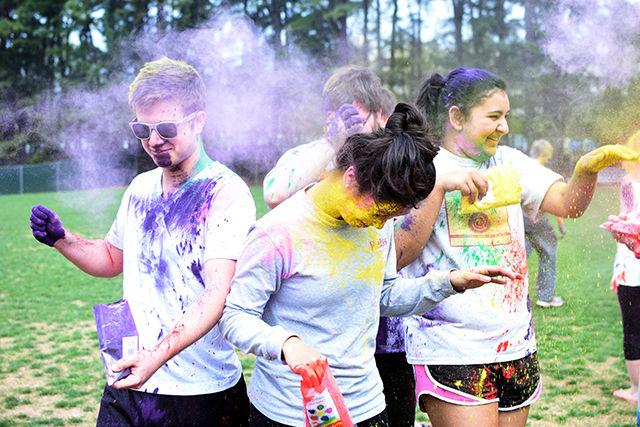I’m going to preface this column by saying that one of the most beautiful, wholesome aspects of the Hindu Holi Festival is how it brings people together, regardless of gender, age, race or socioeconomic (caste) status. For a blessed few hours, people come together to celebrate the Festival of Colors, commemorating the arrival of spring and various Hindu legends, wishing each other wealth and prosperity in the new season. It is, essentially, a time when all prejudice is suspended, and all actions and words are exchanged in good nature.
Earlier this week, the Technician ran an article in the news section giving a general summation of the Holi Festival at NC State. Readers were given a fairly all-encompassing, if rather vague and disjointed, account of the festival; there were even a scant few lines — however, short and poorly explained — about the religious and cultural significance of Holi. Granted, the NC State festival organizers did a poor job of explaining the true Hindu origins as well. More to the point, they didn’t explain it at all.
To quote the earlier article, “Shikhar Arora, a sophomore studying mechanical engineering who is from India, appreciated the event’s authenticity … However, Arora felt the event came up short in teaching attendees why Holi is celebrated.” Out of all the Hindu religious festivals, Holi is one of the least religiously affiliated, simply by virtue of the passage of time.
Much like Christmas, over the centuries, the true religious origins of Holi have become less important, making Holi almost exclusively a cultural tradition celebrated all around India. The result is that Holi becomes a much more accessible festival to people all around the globe, similar to how Christmas is often still celebrated by non-Christians.
What really gets me, though, is that there is always a certain element of education that has to be accounted for in the spread of different cultural traditions from one country to another. Even though the true religious origins of Christmas have been lost to some, pretty much everyone and their brother knows the cultural significance of Christmas, whether or not they actively celebrate it.
Indian culture and history is so rarely addressed that any mention of anything remotely Indian in American culture is like a drop of water during a severe drought. If those tidbits of information were accurate, and beneficial to the societal understanding and acceptance of Indians, I’d be pleased as punch. The problem, though, is that much of Indian culture is being painted in an extremely inaccurate and appropriative light — a problem that is perpetuated by the lack of education or explanation of the importance of festivals such as Holi.
I mentioned earlier, my favorite part of Holi is the way it allows people to set aside their differences in the most playful and innocuous way. This relative camaraderie loses its charm, though, when the umpteenth uneducated non-Indian approaches me and tells me in great detail how the idea of Holi is so great, because it’s just like the Color Run, without the actual running.
This is not a chicken and egg situation — Holi came first, thousands of years ago, and has since been taken and misconstrued in so many ways by well-intentioned, yet culturally unaware people who just want to throw some color around. The crux of the issue is that this brand of appropriation is not exclusive to Holi but is also present in many other non-Western cultural and religious traditions around the world.














